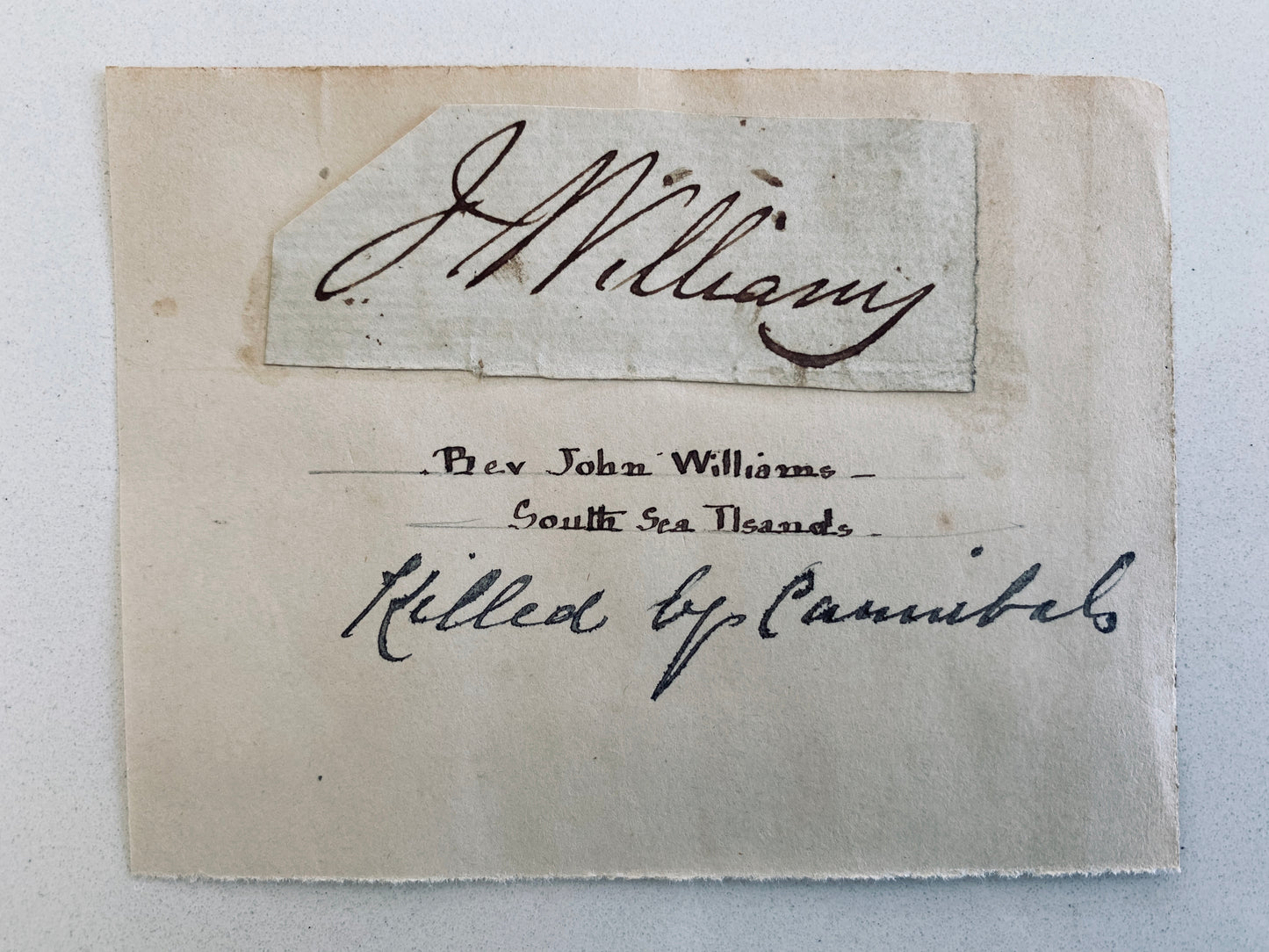Specs Fine Books
1839 JOHN WILLIAMS. Rare Autograph of Missionary Killed and Eaten by Cannibals. Very Desirable.
1839 JOHN WILLIAMS. Rare Autograph of Missionary Killed and Eaten by Cannibals. Very Desirable.
Couldn't load pickup availability
Very rare, preserved from an early album, cut signature of the proto-martyr of the modern missionary movement, John Williams.
John Williams (27 June 1796 – 20 November 1839) was an English missionary and important martyr-figured that catalyzed the missionary movement in the early 19th century.
He and his wife Mary Chawner Williams set sail for the Society Islands, including Tahiti, accompanied by William Ellis and his wife. John and Mary established their first missionary post on the island of Raiatea. From there, they visited a number of the Polynesian island chains, sometimes with Mr. and Mrs Ellis and other London Missionary Society representatives. Landing on Aitutaki in 1821, they used Tahitian converts to carry their message to the Cook islanders. One island in this group, Rarotonga, rises out of the sea as jungle-covered mountains of orange soil ringed by coral reef and turquoise lagoon; Williams became fascinated by it and was intent on seeing the Gospel spread to its people.
In 1827 Williams had heard of other heathen islands in the vicinity and in order to expand his ministry he built a ship from local materials, the Messenger of Peace, in fifteen weeks. He set sail by November 1827 for the Society Islands, not returning till February 1828, when he then removed his family to Raiatea.
John Williams arrived in Samoa in 1830, among his crew, a Samoan couple, Fauea and his wife Puaseisei, who joined them on their voyage and proved pivotal in the mission in Samoa. They set foot on the island of Savaii at Puaseisei's village of Safune, before arriving at Sapapalii on the 24th of August, 1830, to meet with Malietoa Vaiinuupo who had sole power over Samoa following the death of his rival Tamafaiga. Williams' meeting with Malietoa proved a success, as Malietoa accepted Christianity immediately.
The Williamses returned in 1834 to Britain, where John supervised the printing of his translation of the New Testament into the Rarotongan language. They brought back a native of Samoa named Leota, who came to live as a Christian in London. While in London, Williams also published a "Narrative of Missionary Enterprises in the South Sea Islands", making a contribution to English understanding and popularity of the region, before returning to the Polynesian islands in 1837 on the ship Camden under the command
Most of the Williamses' missionary work, and their delivery of a cultural message, was very successful and they became famed in Congregational circles. However, in November 1839, while visiting a part of the New Hebrides where John Williams was unknown, he and fellow missionary James Harris were killed and eaten by cannibals on the island of Erromango during an attempt to bring them the Gospel.
A memorial stone was erected on the island of Rarotonga in 1839 and is still there. John Williams' remains (bones) were shipped and are buried in Apia, Samoa. A monument was erected in front of the LMS church of Apia, with a 6 story building housing the headquarters of the Congregational Church of Samoa named after John Williams was built commemorating his work in the Samoan islands.
The LMS successively operated seven missionary ships in the Pacific which were named after John Williams. They were funded by donations from children. The first, John Williams, was launched in 1844.
Share


